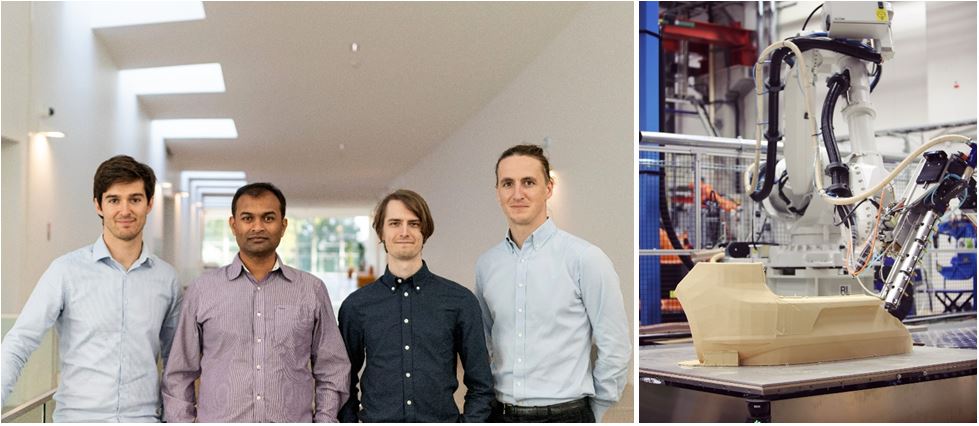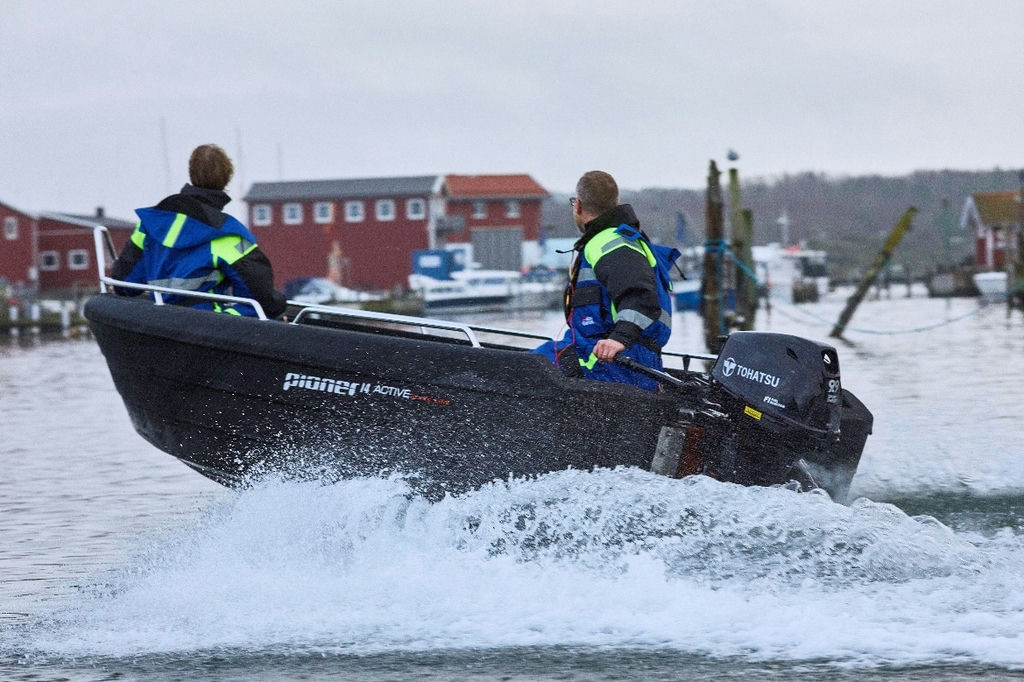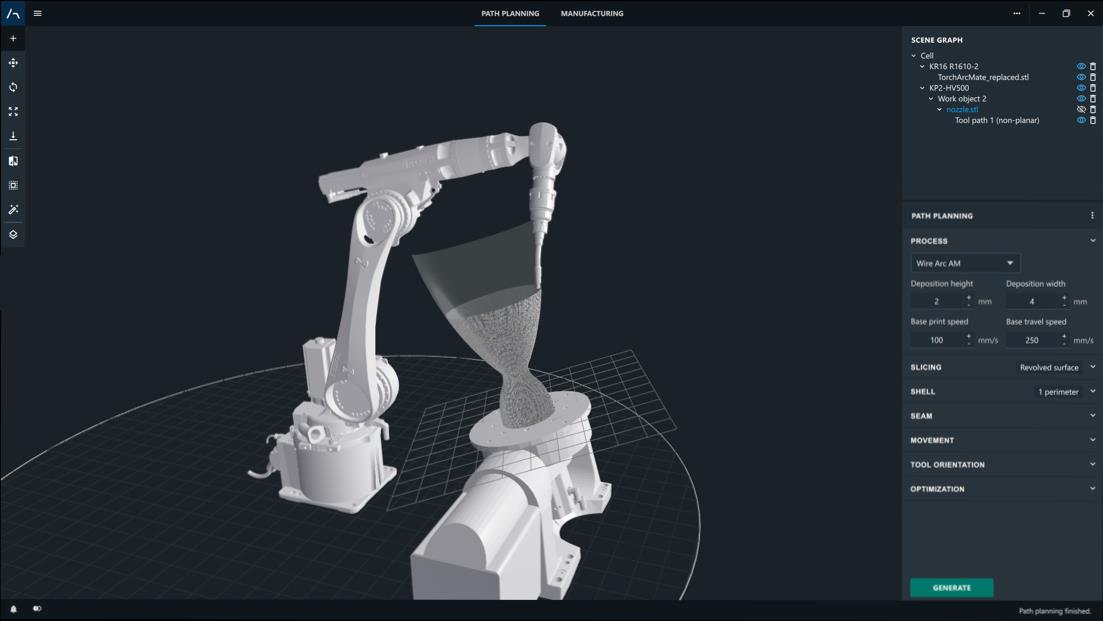ADAXIS, a French-Swedish robotics company, offers a software platform to make it easy to use industrial robots as large-scale 3D printers. The mission is to enable a flexible and sustainable industry by making advanced manufacturing processes accessible to every company.
In February 2022, Indian government released a national additive manufacturing strategy that aims to add $2-3 billion to GDP by 2025. Additive manufacturing has the potential to revolutionize India’s manufacturing and industrial production landscape. Under this strategy, the government plans to develop technologies for material, machine, process, software to make India an additive manufacturing hub. The strategy for innovation and R&D ecosystem encourages public-private partnership to advance additive manufacturing capabilities of India. ADAXIS believes Indian additive manufacturing industry is growing faster. A greater commitment from the government through various initiatives makes it the right time to enter the Indian additive manufacturing market.
Combining robotic arms and 3D printing is increasingly becoming a substantial business for industries. Despite its potential, one of the major limitations is the time-consuming task of programming the industrial robotic as 3D printers, which is the challenge ADAXIS aims to overcome.
ADAXIS, a French-Swedish robotics software company, since its launch in early 2021, has raised more than €1 million in pre-seed funding from the European Institute of Innovation and Technology (EIT), Newfund Capital, SkalePark and regional grants. Founders Henri Bernard, Guénolé Bras, Emil Johansson and Vasan Churchill created the company in early 2021 following six years of applied research into using industrial robotics for advanced manufacturing at France-based centre ESTIA – Addimadour especially – and RISE Research Institutes of Sweden. ADAXIS is also a winner of French government’s prestigious I-lab innovation award for deep-tech companies.

AdaOne, the software platform of ADAXIS supports 3D printing using metals, plastics, composites, and concrete. The advanced path planning of AdaOne enhances the functionality of robotic 3D printers. AdaOne leverages the six degrees of freedom of robot for path planning of complex geometries and simplifies the user workflow. ADAXIS help our users reimagine the potential of industrial robots as 3D printers. The software is scalable and can program robots of any size, enabling printable volume up to tens of cubic meters. This capability gives companies the power to set up local and on-demand production of highly advanced parts, reducing the need for storage, transportation, and logistics. ADAXIS is also developing support for hybrid machine tools which combines both additive and subtractive heads. Hybrid machines are gaining popularity in India, and it is a great opportunity for ADAXIS to partner with Indian industries.
ADAXIS currently have more than 50 users (25 customers) across Europe and Americas, and ADAXIS is expanding rapidly. They are from diverse domains like aerospace, automotive, marine and construction. Our users print with different materials like metals, polymers including fibre filled and concrete using various processes. ADAXIS is robot agnostic and support various brands including ABB, KUKA, FANUC and YASKAWA. ADAXIS is continuously integrating as many robot brands as possible in the market.
The simplified and integrated interface lets our users build their own robotic cell with robots and other cell objects like positioners, worktable etc. They can also import geometries in a variety of formats apart from the usual mesh-based file systems. You can repair and modify the geometry inside our software, apply advanced path planning strategies, check for collision, program specific events giving the customers a greater control of the process, simulate the robot movement and export these movements as robot programs to print the part.
AdaOne’s proprietary algorithms for multi-axis toolpaths enable the creation of parts which could previously not be manufactured. Customized deposit orientation improves surface quality and mechanical strength by avoiding traditional horizontal layers. Large, complex parts can be realized without assembly steps and with minimal material waste. While large and complex parts are often mentioned as an example of what the software can achieve, it should be noted that repair of damaged parts can also be performed by allowing material to be deposited on existing 3D surfaces.

ADAXIS is excited to expand ADAXIS’ horizons in India, Middle East, and other APAC countries by exploring new business opportunities for large scale additive manufacturing of polymers, metals, and concrete. Currently, our focus is on forging partnerships with key players in the large-scale robotic additive manufacturing ecosystem in this region. ADAXIS is looking forward to connecting with robotic integrators, technology/solution providers, entrepreneurs and researchers and partner with them. Please feel free to reach out to us if you want to know more about ADAXIS’ value addition to your large additive manufacturing system.
Subscribe to AM Chronicle Newsletter to stay connected: https://bit.ly/3fBZ1mP
Follow us on LinkedIn: https://bit.ly/3IjhrFq
Visit for more interesting content on additive manufacturing: https://amchronicle.com/


